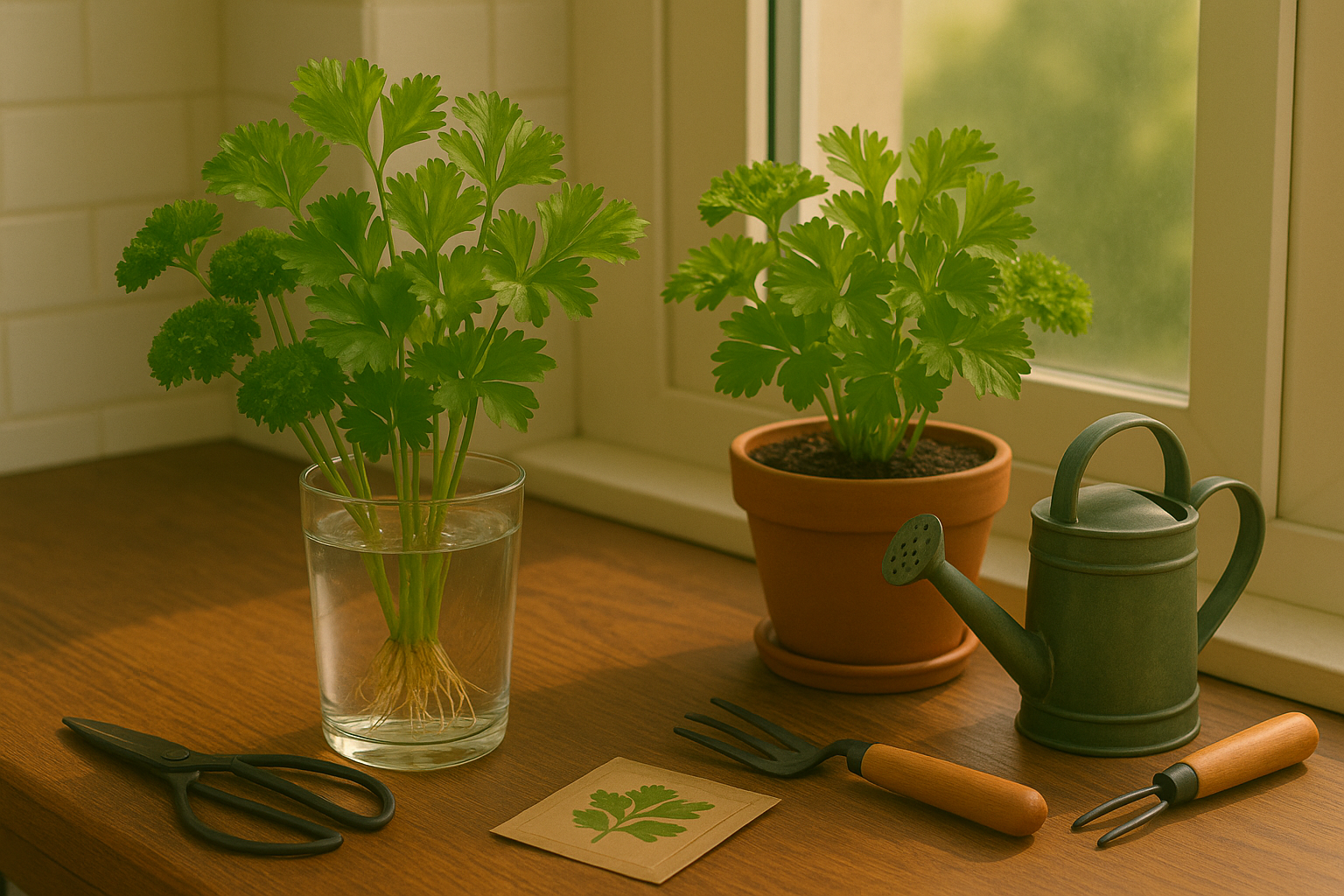Introduction
If you love adding fresh, vibrant flavor to your meals, chances are parsley is a staple in your kitchen. This versatile herb appears in everything from salads and soups to flavorful garnishes, making it one of the most popular choices for home cooks everywhere. But like many, you may have found yourself with a leftover bunch of parsley from the store and wondered: can you regrow store-bought parsley and keep the fresh supply going without buying a new bunch every week?
The good news is, regrowing store-bought parsley is entirely possible—and it’s easier than you might think. Imagine snipping leaves straight from a bright, regrown plant on your windowsill, ready for any recipe that calls for a burst of green. Not only does this save you money, but it also reduces waste and keeps your kitchen looking lively.
Whether you’re working with just the stems or you still have roots attached, we’ll walk you through proven methods to revive those leftover sprigs. You’ll find out which store-bought bunches work best, how to prepare and plant your cuttings, and practical tips to encourage healthy regrowth. Plus, we’ll share real-world troubleshooting advice, so you’re prepared for any common setbacks.
Read on to discover how you can transform forgotten parsley stems into a thriving mini herb garden—and enjoy a steady supply of fresh greens all season long.
Understanding Parsley – Plant Anatomy and Growth Habits
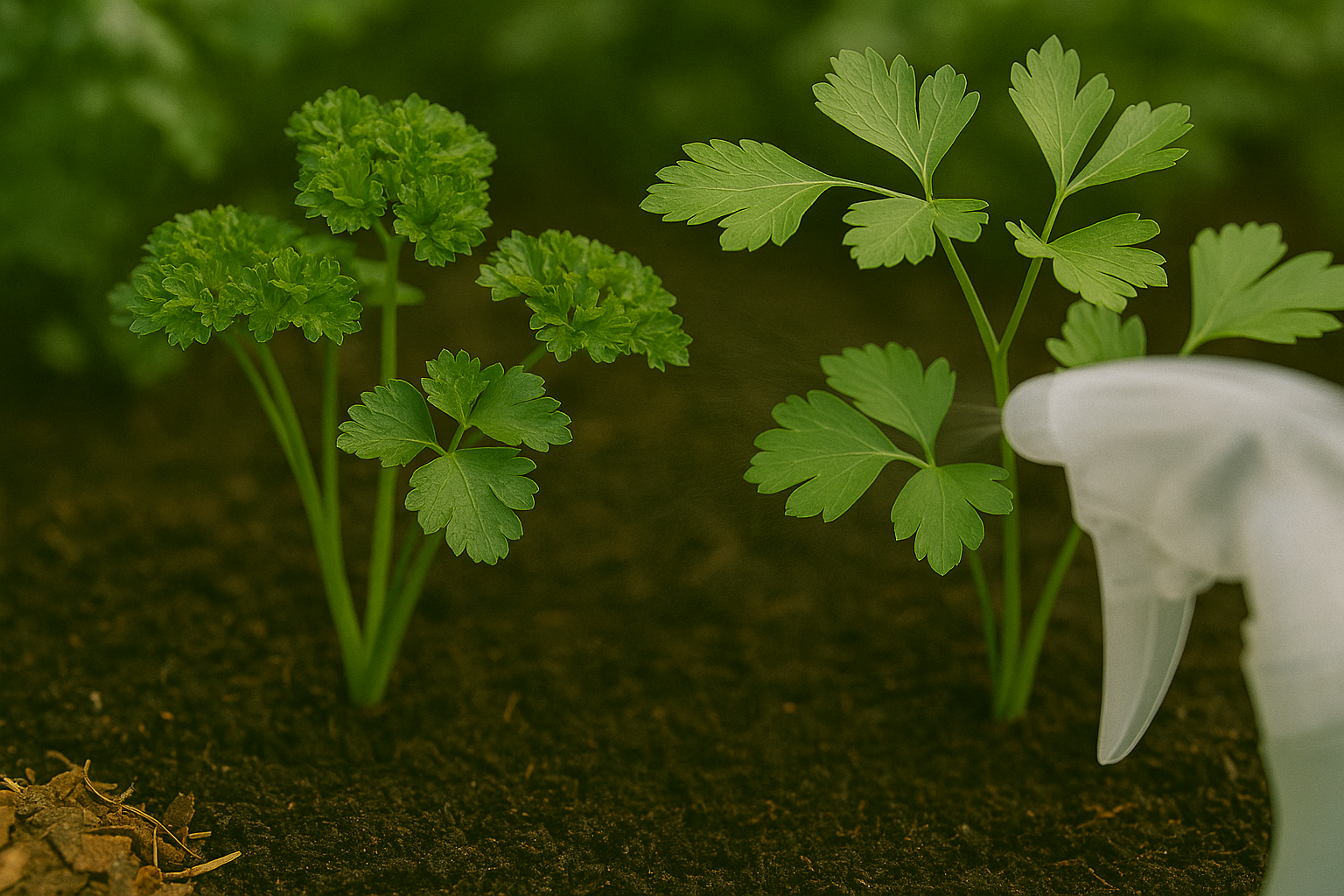
Parsley is a versatile herb that comes in two main varieties: flat-leaf (Italian) and curly. Flat-leaf parsley is favored by chefs for its robust flavor and ease of chopping, while curly parsley’s frilly texture makes it a popular choice for garnishes.
Both types share similar growth habits, forming dense rosettes of bright green leaves from a central base. The key to parsley’s regrowth lies in its anatomy: the plant grows from a taproot system, with leaves and stems emerging directly from the crown at soil level.
Healthy regrowth depends on leaving this central crown and a portion of the root intact; if either is damaged during harvest, the plant struggles to recover or may die off completely. When harvesting, snip individual stems close to the base rather than cutting all the foliage at once. This encourages new shoots to emerge from the center instead of weakening the plant.
If you remove too much of the leaf mass or inadvertently dig up the entire root, parsley often fails to sprout again. Curly and flat-leaf varieties behave similarly in this respect, but flat-leaf tends to be slightly more vigorous in regrowing after a proper cut.
For perennial growth or continuous harvests, focus on maintaining a healthy root system and avoid disrupting the crown—this ensures your parsley plants can keep producing flavorful leaves throughout the season.
Can Parsley Regrow After Cutting?
Many people wonder if parsley can regrow after being cut, especially when they buy bunches from the store and hope to get more out of their herbs. It’s important to understand that parsley regrowth depends on whether you have roots or just cut stems.
If you only save the leafy cut stems—like those in most store-bought bundles—regrowth is very unlikely. Stems alone lack the nodes and root structure needed to develop new growth. So, while putting these stems in water may keep them fresh a bit longer, you won’t see any new leaves sprouting.
However, if your parsley bunch includes some of the root base—the thicker, pale part at the bottom—you have a better chance. For a simple home experiment, trim any lower leaves off this root base and place it in a shallow cup of water on a sunny windowsill. Change the water daily to prevent rot. With some luck, you should see tiny roots and new leaves developing after a week or two.
Another method is planting the root base directly in moist potting soil and keeping it warm. Myths often circulate that all cut parsley will regrow if placed in water, but that’s not accurate; regrowth requires living root tissue.
For truly endless parsley, the best approach is to grow your own from seeds or purchase a potted live plant. With live roots, trickling leaves from the outside while leaving the center growth undisturbed ensures a continuous harvest for months.
So, while creative kitchen experiments are fun, know that not all parsley can magically regrow—roots are the real secret!
How to Regrow Store-Bought Parsley — Practical Steps
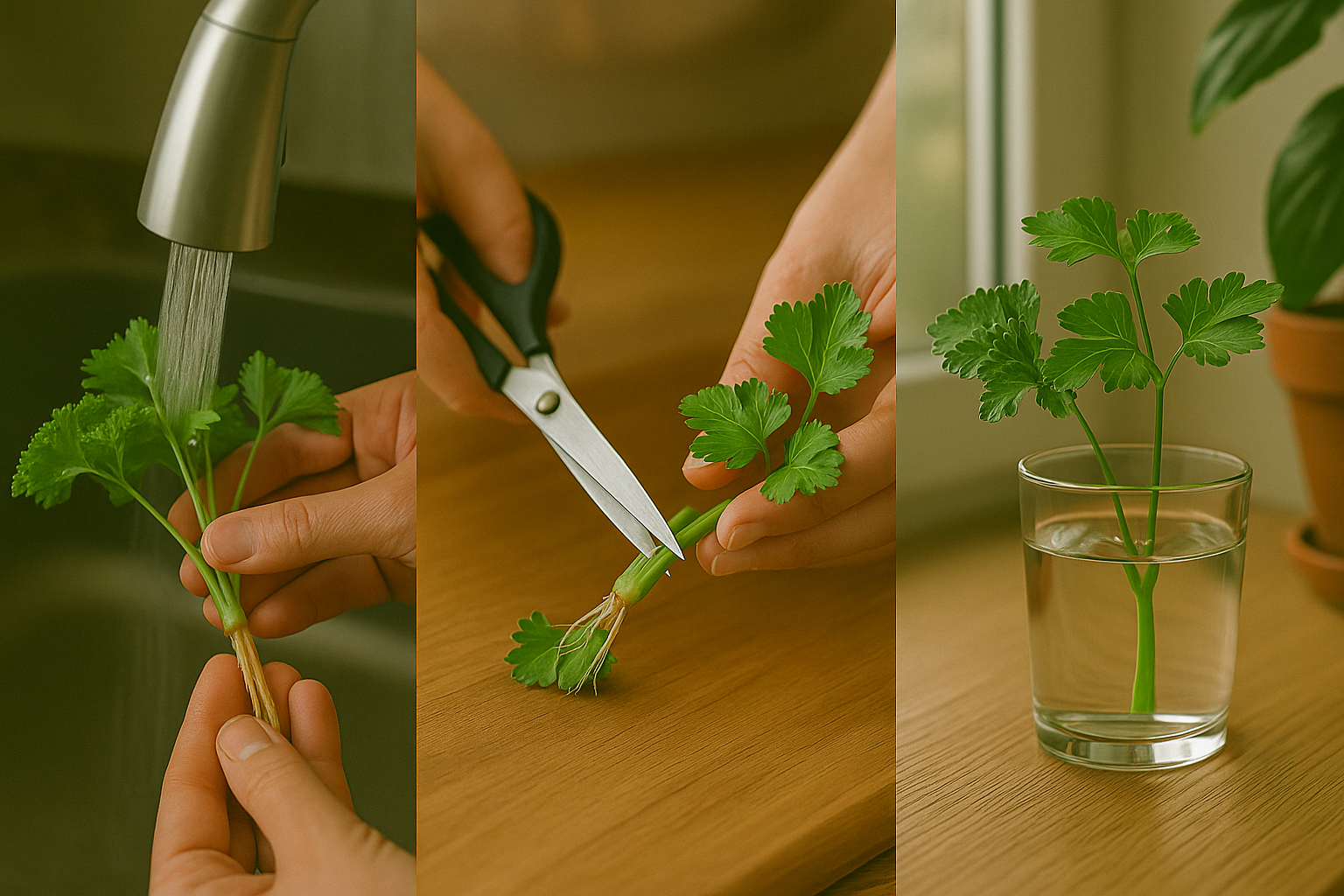
When selecting store-bought parsley for regrowth, always look for bunches with the roots still attached; these are usually found at farmers’ markets, specialty grocers, or organic sections. Parsley sold as just cut stems won’t regrow, but those with visible roots offer a second life in your kitchen.
To start, rinse any soil from the roots and trim the tops to about 2-3 inches above the base. Place the root ends in a glass of clean water so the roots are submerged but the leaves stand above the water. Set the glass on a bright windowsill with indirect sunlight. Change the water every two days to keep it fresh and prevent mold.
After about 7-10 days, you’ll notice new root growth and possibly new shoots on the stems. Once the roots are approximately two inches long and appear strong, transplant the parsley into a pot filled with moist, well-draining potting mix. Bury the roots and base up to where new leaves begin.
For healthy regrowth, keep the soil evenly moist but not soggy—parsley dislikes both drought and waterlogging. Place your pot in a spot with plenty of indirect sunlight, such as an east- or west-facing windowsill. If your home is dim, consider supplementing with a simple grow light.
To encourage bushier growth, snip outer stalks frequently, always cutting just above the soil line or a leaf junction. Never remove more than a third of the plant at a time to prevent stress.
With patience and care, your parsley should thrive, yielding fresh sprigs for weeks or even months—an easy, sustainable way to stretch your grocery budget and add a homegrown touch to your meals.
Troubleshooting
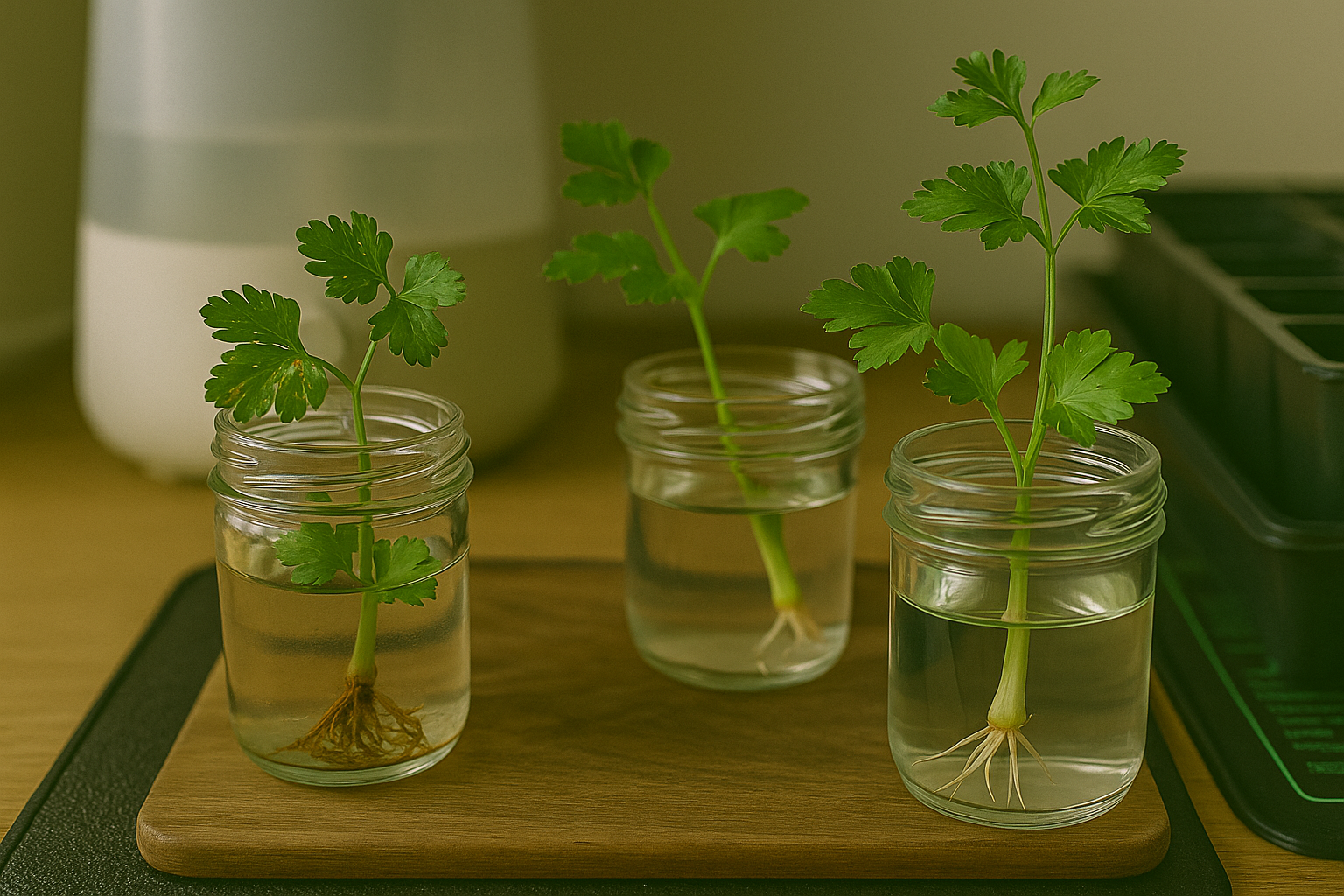
When propagating plants, you might encounter issues like old stems, damaged roots, mold growth, wilting leaves, or poor root development—but these problems are usually fixable with a few simple tweaks.
Using old stems can slow or halt rooting, so always select green, healthy cuttings from recent growth. If roots appear brown, mushy, or broken, it’s often a sign of overwatering or rough handling; trim away the damaged parts and ensure your propagation medium drains well.
Mold is a common annoyance, especially in humid setups. To prevent it, let your cuttings get more airflow, avoid overcrowding, and replace any moldy water or soil immediately.
Wilting or yellowing leaves typically indicate too little water, too much sun, or sudden temperature fluctuations. Keep plants in bright, indirect light and mist them if the air is very dry.
Poor root formation may signal that your cuttings aren’t getting enough warmth or that you’re using cuttings from a woody part of the plant. In these cases, try adding a humidity dome or placing them on a heat mat, or simply switch to a fresher section.
If several propagation attempts fail despite these adjustments, it might be a sign that the genetics of your plant are weak or the parent plant is too old. In such cases, starting anew from seed is often the best option, giving you more vigorous, resilient growth from the very start.
Benefits of Regrowing Parsley at Home
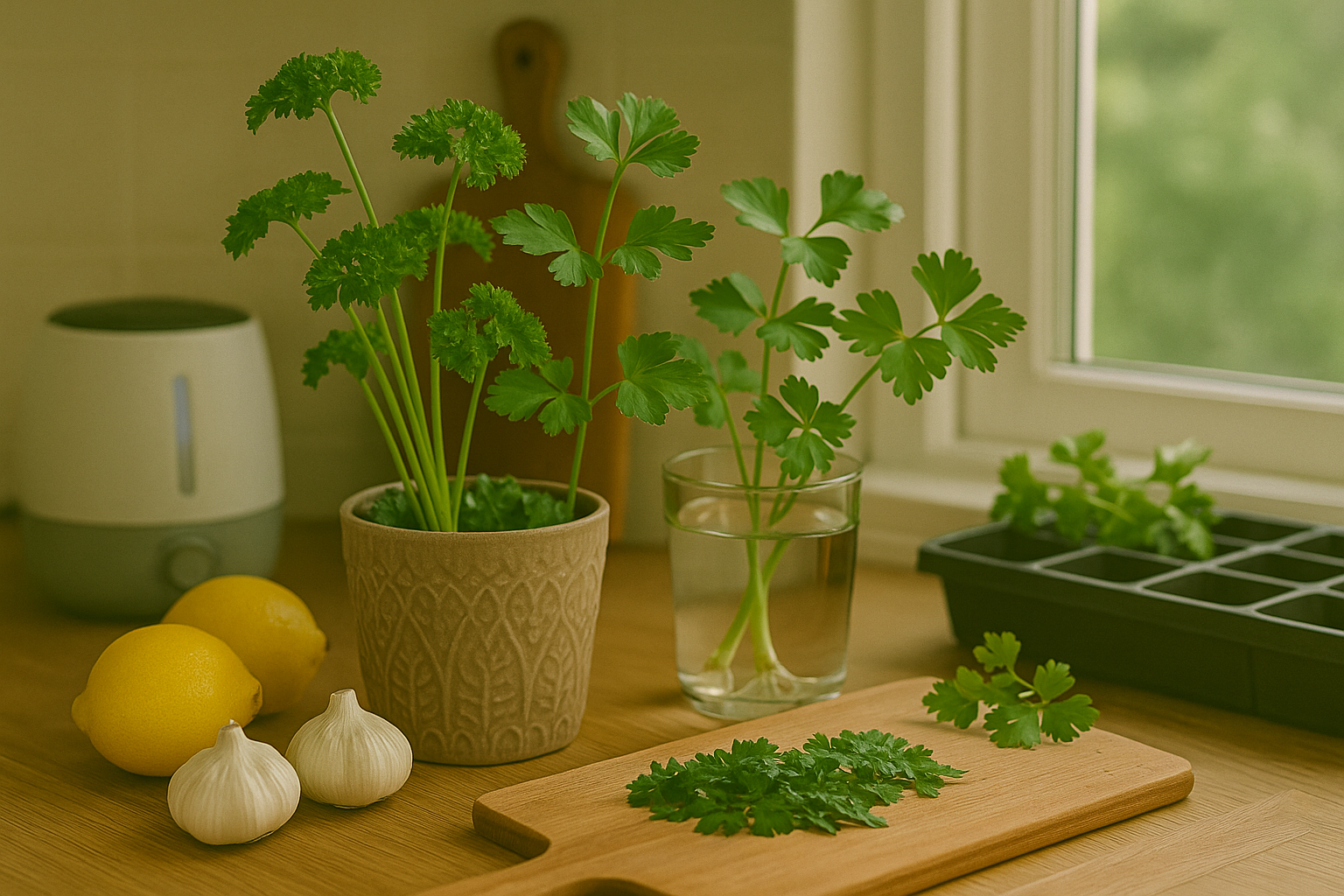
Regrowing parsley at home offers a bundle of tangible benefits that go beyond simply having a fresh herb at your fingertips. First, it’s a smart way to save money—no more buying new parsley bunches every week, only to toss out what inevitably wilts. Instead, snip off just what you need from your thriving plant and let the rest keep growing, which helps stretch your grocery budget.
Home-grown parsley is also undeniably fresher, providing a bright, robust flavor that far outshines store-bought leaves that may have been sitting on shelves for days. By regrowing parsley from leftover stems or roots, you’re actively reducing kitchen waste and contributing to a more sustainable lifestyle. Composting is great, but giving herbs a second life right on your windowsill is even better.
Plus, nothing beats the satisfaction of harvesting something you’ve nurtured yourself; it transforms cooking into a more rewarding, mindful experience. Whether you sprinkle it over soups or add a handful to salads, home-grown parsley elevates every dish while brightening your space with its lush greenery.
Even beginners find that parsley is resilient and forgiving, making it a perfect entry point for anyone looking to grow their own food—no garden required.
Conclusion & Quick FAQ
Regrowing store-bought parsley is a simple and rewarding way to keep fresh herbs on hand. Start by selecting healthy stems with some leaves still attached; place them in water until roots appear, then transfer them to soil in a sunny spot. Remember to keep the soil moist but not soggy, and pinch back the leaves regularly to encourage bushier growth.
Whether you have curly or flat-leaf parsley, both types regrow well with this method—the taste remains the same, though homegrown parsley can sometimes be more flavorful. Most parsley cuttings take about two to four weeks to develop roots before they’re ready for planting, so a little patience pays off.
Wondering if the store’s cut parsley will work? As long as the stems are fresh and green—not yellowed or wilted—you’re good to go. Regrowing parsley not only saves money but also cuts down on food waste and adds freshness to your meals every day. Give it a try, and let us know your results in the comments—your tips might help someone else achieve a lush kitchen windowsill herb garden!
